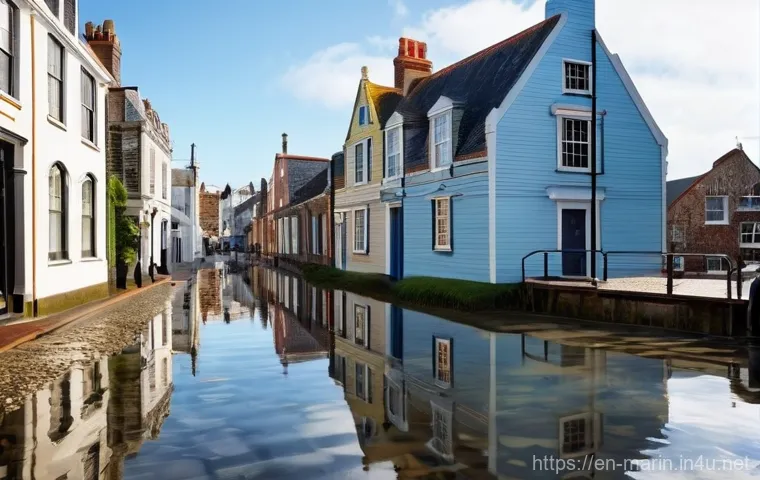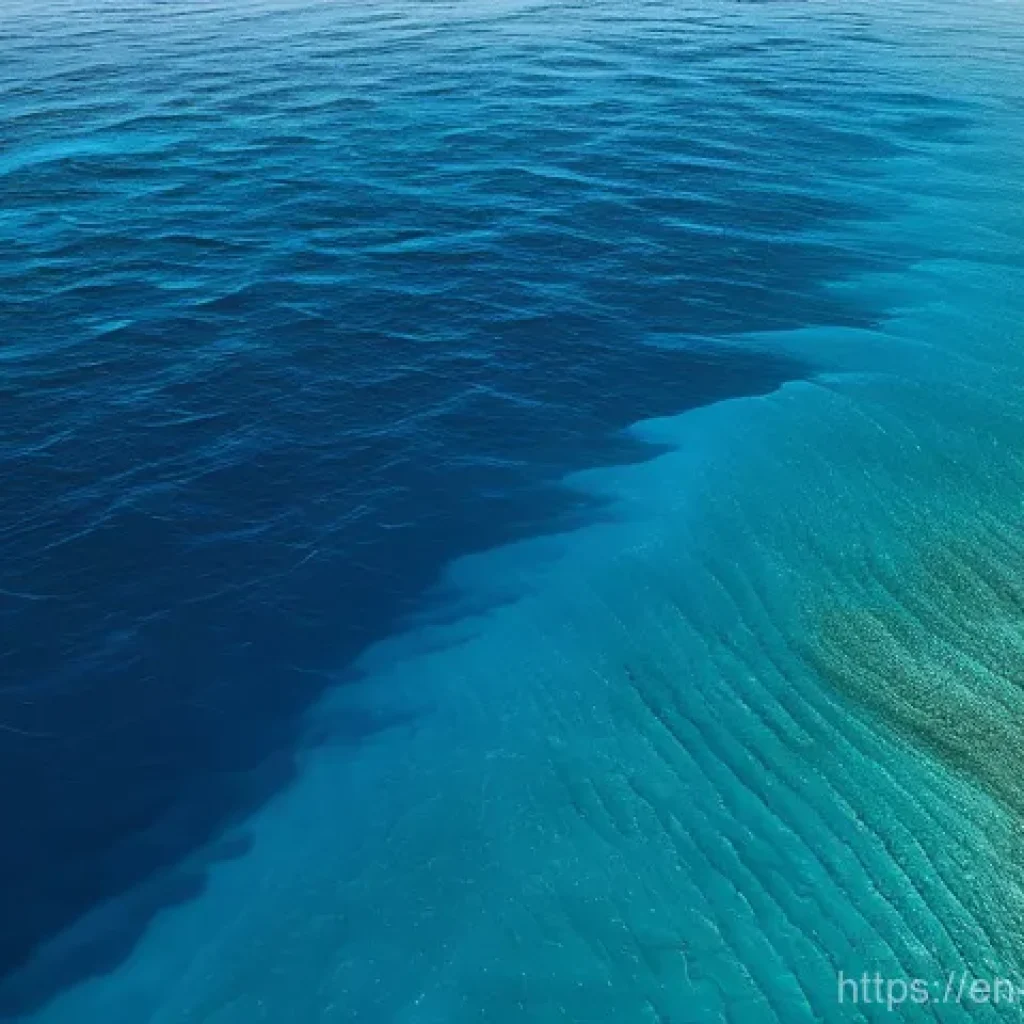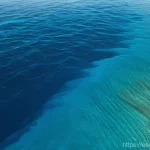It’s wild to think about, isn’t it? Just a few years ago, “sea level rise” felt like a distant issue, something scientists talked about for future generations.
But lately, it’s become a conversation happening right on our doorsteps, impacting communities and economies in ways we never fully imagined. I’ve personally seen how a higher tide can suddenly make certain coastal roads impassable, and it truly makes you realize this isn’t just about polar bears anymore – it’s about our daily lives, our homes, and even our freshwater supplies.
In fact, 2024 saw an unexpected acceleration in global sea level rise, with NASA reporting a rate of 0.23 inches per year, significantly higher than anticipated, primarily due to unprecedented ocean warming and melting glaciers.
This isn’t just a slight increase; it’s a dramatic shift that’s amplifying storm surges, threatening crucial ecosystems like mangroves and coral reefs, and putting billions of people worldwide at risk of catastrophic flooding and displacement.
From the U.S. East Coast to vulnerable Pacific island nations, coastal areas are grappling with how to adapt to these rapidly changing realities. It’s a complex, pressing issue that demands our attention now more than ever, and honestly, it makes me wonder what our world will look like in just a few decades if these trends continue.
Let’s delve deeper into what’s really happening and what we can do about it.
The Science Behind the Surge: More Than Just Melting Ice

It’s easy to point a finger at melting glaciers and ice sheets when we talk about sea level rise, and absolutely, they’re massive contributors. I mean, who hasn’t seen those dramatic images of ice calving into the ocean?
But honestly, there’s another, often overlooked, culprit that’s been silently making our oceans swell: thermal expansion. Think about it like this – when you heat water, it expands, right?
Our vast oceans have been absorbing an incredible amount of the excess heat trapped by greenhouse gases, and as they warm up, that water literally takes up more space.
It’s a slow, insidious process, but when you consider the sheer volume of the world’s oceans, even a tiny bit of expansion adds up to a significant rise.
This isn’t just a minor detail; it’s a fundamental force driving the changes we’re seeing globally. I remember learning about this in school and thinking it was an abstract concept, but seeing how much hotter our summers are becoming, and then connecting that to the ocean’s temperature, it really hits home how interconnected everything is.
It’s a complex dance between temperature, ice melt, and ocean currents that all contributes to the bigger picture of where our coastlines are heading.
Thermal Expansion: The Ocean’s Growth Spurt
My jaw actually dropped when I first grasped just how much of the Earth’s extra heat the oceans have absorbed. We’re talking about an overwhelming majority – something like over 90% of the additional heat from human emissions has gone straight into the ocean.
This isn’t just about surface temperatures; that warmth penetrates deep, causing the water molecules to spread out ever so slightly. Imagine trying to cram more liquid into an already full glass; something’s got to give, and in this case, it’s our coastlines that are feeling the pressure.
For years, I just pictured icebergs melting, but realizing that the water itself is expanding because it’s getting warmer changed my perspective entirely.
It’s a silent, relentless process that contributes roughly half of the observed sea level rise, making it a powerful, if invisible, force. The deeper waters warm, the more they expand, creating this slow-motion, undeniable surge against our shores.
Glaciers and Ice Sheets: Our Vanishing Giants
Then, of course, there are the dramatic visuals that capture our attention: the colossal glaciers and ice sheets. From the vast expanse of Greenland and Antarctica to the smaller mountain glaciers around the world, these frozen reservoirs hold an immense amount of water.
When temperatures climb, these giants begin to melt at an accelerated pace, dumping unimaginable quantities of freshwater into the ocean. It’s heartbreaking to see images of glaciers that once spanned miles now retreating dramatically year after year.
I’ve personally seen videos of ice crumbling into the sea, and it really drives home the sheer scale of the water being added. This isn’t just a natural cycle anymore; the speed at which this is happening is unprecedented.
The meltwater from these areas directly contributes to the rising sea, and what’s more, the darker ocean water absorbs even more heat, creating a feedback loop that makes everything worse.
It’s a stark reminder of the fragile balance of our planet and how quickly human actions can disrupt it.
When the Ocean Knocks: Everyday Impacts on Our Shores
It’s no longer just a hypothetical scenario for “future generations” or a concern limited to far-off island nations. Believe me, the ocean is already knocking on our doors, and for many, it’s already come inside.
I’ve seen it firsthand on the U.S. East Coast, where what used to be a rare “king tide” flood now happens so frequently it’s almost become routine. Suddenly, roads I’ve driven my entire life are impassable, basements get waterlogged, and local businesses are left scrambling.
This isn’t about dramatic storm surges exclusively; it’s about the steady creep of higher high tides that make even a normal rain shower feel like a major event.
It’s disrupting daily commutes, threatening vital infrastructure, and even changing the taste of our drinking water. The economic toll is mounting, with property values in vulnerable areas facing uncertainty and coastal industries battling increased operational costs.
Roads and Infrastructure: Daily Commutes Disrupted
I can’t tell you how many times lately I’ve had to reroute my drive because a section of road, once perfectly dry, is now completely submerged during a high tide.
It’s incredibly frustrating and adds significant time to what should be a simple trip. This isn’t just an inconvenience; it’s a serious issue impacting emergency services, public transportation, and supply chains.
Think about how many bridges, tunnels, and even entire utility systems are built right along our coasts. As the sea level creeps up, these vital pieces of infrastructure become increasingly vulnerable to saltwater intrusion and regular flooding.
The cost of continually repairing, elevating, or even relocating these assets is astronomical, placing a huge burden on local governments and taxpayers.
It’s a silent, constant attack on the very foundations of our coastal communities, making daily life harder and more expensive for everyone.
Salty Surprises: Threat to Fresh Water Supplies
Here’s a thought that truly kept me up at night: sea level rise isn’t just about too much water, it’s about the *wrong kind* of water. Many coastal communities rely on underground freshwater aquifers for their drinking water.
But as sea levels rise, the increased pressure pushes saltwater further inland, contaminating these precious freshwater sources. It’s like a slow-motion invasion where the ocean infiltrates our most basic necessity.
I remember hearing about communities suddenly dealing with wells that taste brackish, or having to spend huge sums on desalination plants. It’s a dire situation that affects not just our health but also agriculture, as salty irrigation water can ruin crops.
This unseen threat below ground is just as critical as the visible flooding above, reminding us that the impacts are far more pervasive than we often realize.
Real Estate Rollercoaster: The Value of Waterfront Property
For generations, owning property by the water was the ultimate dream, a symbol of luxury and success. But honestly, that dream is turning into a nightmare for many.
I’ve heard countless stories, and even seen some firsthand, of homes once considered prime real estate now struggling to sell, or facing exorbitant flood insurance premiums.
It’s a real estate rollercoaster where the track keeps getting submerged. Lenders are becoming more wary, insurance companies are pulling out or hiking rates, and potential buyers are rightfully hesitant about investing in an increasingly risky location.
It’s not just about losing money; it’s about losing generational wealth and the stability that comes with homeownership. The future value of waterfront properties is becoming a huge question mark, and it’s forcing many to make incredibly difficult decisions about their homes and livelihoods.
Coastal Havens on the Edge: Stories of Resilience and Retreat
It’s easy to feel overwhelmed by the sheer scale of sea level rise, but what truly inspires me is the ingenuity and resilience of the people living on the front lines.
From the bustling metropolises like Miami, battling daily nuisance flooding, to the tiny, vulnerable Pacific island nations whose very existence is threatened, communities are wrestling with monumental questions.
Do we try to defend every inch of coastline, building bigger and higher walls? Or do we make the heartbreaking decision to retreat, to move away from places that have been home for generations?
There are no easy answers, and I’ve seen the emotional toll these decisions take. It’s not just about concrete and engineering; it’s about culture, heritage, and the very identity of a place.
But amidst the challenges, there are also incredible examples of communities coming together, brainstorming, and implementing solutions that genuinely offer a glimmer of hope.
Adapting in Action: From Miami to the Maldives
You know, when I think about adaptation, my mind often goes to places like Miami, where they’re literally raising roads and installing massive pumps to deal with the constant influx of water.
It’s a huge undertaking, and it shows the determination to protect what’s there. But then I also think of places like the Maldives, an island nation that could quite literally disappear if current trends continue.
Their situation is so dire that they’ve explored everything from building floating cities to even purchasing land in other countries as a last resort.
It’s a stark contrast in scale and resources, but the underlying motivation is the same: survival. What’s fascinating is seeing how different communities are innovating, sharing knowledge, and trying to find tailored solutions.
It makes you realize that adaptation isn’t a one-size-fits-all approach; it’s a dynamic, ongoing process that requires creativity and cooperation.
The Tough Choices: To Defend or to Relocate?
This is where it gets really personal and incredibly difficult. Imagine having to decide whether to invest millions, or even billions, into building massive sea defenses, knowing they might only buy you a few decades.
Or, imagine telling entire communities that their homes, their ancestral lands, are simply no longer safe, and they must move. These are the brutal choices facing countless towns and cities.
I’ve read about communities in Alaska, for example, where entire villages are literally crumbling into the sea, forcing residents to contemplate costly and emotionally wrenching relocations.
It’s not just about the monetary cost; it’s about the loss of cultural identity, the breaking of social ties, and the emotional trauma of leaving behind everything you know.
It’s a stark reminder that while we can implement engineering solutions, the human element, the social fabric of our communities, is equally at stake.
Nature’s First Line of Defense: Saving Our Coastal Ecosystems
It’s truly incredible how often nature provides the best solutions if only we’d listen and protect it. Before humans started paving over everything and building right up to the water’s edge, coastal ecosystems like mangroves, salt marshes, and coral reefs were doing a phenomenal job of buffering our shores.
They’re like nature’s own sea walls, absorbing wave energy, trapping sediment, and providing vital habitats for countless species. But sadly, we’ve degraded so much of these natural defenses, often without realizing their true value.
Now, as sea levels rise, we’re seeing just how much we depend on them, and how vulnerable they are themselves to the changing conditions. Protecting and restoring these natural buffers isn’t just about saving pretty landscapes; it’s a critical strategy for our own survival.
Mangroves and Salt Marshes: The Unsung Heroes

I’ve always been fascinated by the incredible resilience of mangroves and salt marshes. These aren’t just muddy, mosquito-infested areas; they are absolute powerhouses when it comes to coastal protection.
Their intricate root systems literally hold the soil together, preventing erosion, and their dense vegetation acts like a giant sponge, absorbing floodwaters and dissipating the energy of incoming waves.
I remember visiting a restored mangrove forest and being amazed at how quiet and peaceful it was, a stark contrast to the rough ocean just beyond. Not only do they protect us, but they also provide vital nurseries for fish and shellfish, acting as carbon sinks, and improving water quality.
Losing these vital ecosystems due to rising seas or development means losing our natural flood defenses and exacerbating the impacts of climate change on our shores.
Coral Reefs: Underwater Cities in Peril
And then there are the breathtaking coral reefs, often called the “rainforests of the sea.” They’re not just stunningly beautiful underwater cities, teeming with life; they also play a critical role in coastal protection.
These incredible structures break up ocean waves far offshore, significantly reducing the wave energy that reaches our coastlines. Imagine them as natural breakwaters, protecting everything from sandy beaches to coastal towns.
But unfortunately, these delicate ecosystems are under immense pressure from ocean warming, acidification, and yes, sea level rise. If the water gets too deep too quickly, corals can’t get enough sunlight to thrive, and the very structures that protect our shores begin to die off.
It’s a double whammy: we lose an irreplaceable natural wonder, and we lose a crucial line of defense against the rising tides.
Turning the Tide: Innovative Solutions for a Changing Coast
Okay, so the challenges are immense, we get it. But honestly, it’s not all doom and gloom. What gives me hope is seeing the incredible innovation happening around the world, as scientists, engineers, and urban planners come together to devise clever ways to adapt.
We’re moving beyond just building higher walls and starting to think smarter, working with nature rather than against it. From cutting-edge engineering marvels to elegant nature-based solutions, people are finding ways to live with water, to manage it, and to protect our communities.
It’s a blend of high-tech and ecological wisdom, and it truly shows what’s possible when human ingenuity is focused on a common goal.
| Adaptation Strategy | Description | Pros | Cons |
|---|---|---|---|
| Hard Engineering (e.g., Sea Walls) | Constructing physical barriers to block water. | Immediate protection for specific areas, proven effectiveness in certain contexts. | High cost, disrupts natural coastline, can displace impacts elsewhere, aesthetically unpleasing. |
| Nature-Based Solutions (e.g., Mangrove Restoration) | Utilizing and restoring natural ecosystems to buffer coastlines. | Cost-effective, provides ecological benefits (habitat, water quality), adaptable. | Takes longer to establish, less effective against extreme events on its own, requires suitable conditions. |
| Relocation / Retreat | Moving communities or infrastructure away from high-risk coastal zones. | Long-term safety, avoids continuous infrastructure damage. | Social and economic disruption, loss of cultural heritage, highly contentious. |
Engineering Our Future: Sea Walls and Artificial Reefs
When I think about engineering solutions, the image of massive, imposing sea walls often comes to mind. And yes, for many densely populated coastal cities, these “hard” defenses are a necessary, albeit costly, measure.
They provide a direct barrier, shielding critical infrastructure and millions of people from rising waters and storm surges. But the innovation doesn’t stop there.
We’re seeing things like artificial reefs being deployed offshore to mimic the wave-breaking action of natural reefs, and even massive surge barriers that can be closed during extreme weather events, like the Maeslant Barrier in the Netherlands.
It’s a testament to human determination to protect our most valuable assets. These projects are huge, complex, and require immense planning, but they offer a lifeline to communities that would otherwise be completely at the mercy of the ocean.
Nature-Based Approaches: Working With the Water
What I find truly exciting, though, are the “softer,” nature-based solutions that are gaining traction. Instead of fighting the water with concrete, we’re learning to work with it.
This means things like restoring wetlands and salt marshes, which naturally absorb floodwaters and break wave energy. It means strategically planting mangroves along coastlines, not just for their beauty but for their incredible ability to stabilize sediment and provide nurseries for marine life.
Even something as simple as beach nourishment – adding sand to eroded beaches – can help create a wider buffer against the sea. These approaches often provide multiple benefits: they’re usually more cost-effective in the long run, they enhance biodiversity, and they can even create beautiful recreational spaces.
It’s about designing solutions that integrate seamlessly with the natural environment, proving that we can protect our homes while also healing our planet.
What Can We Do? Our Collective Power Against the Rising Seas
It’s easy to feel helpless when confronted with an issue as enormous as sea level rise. I know I’ve felt that pang of “what can *I* possibly do?” But here’s the thing: every single one of us has a role to play, both individually and collectively.
This isn’t just about massive government projects or international treaties; it’s about the choices we make every day, the voices we raise, and the support we lend to solutions.
I truly believe that when enough of us band together, our collective power can make a significant difference, not just in slowing the rate of rise, but in building a more resilient future for everyone.
It’s about being proactive, not just reactive, and understanding that our small actions contribute to a much larger wave of change.
Reducing Our Footprint: Every Action Counts
The most fundamental thing we can all do is reduce our personal carbon footprint. I’ve personally made a conscious effort to drive less, use public transport more often, and become way more mindful of my energy consumption at home.
It’s not always easy, but every choice, from switching to energy-efficient appliances to opting for renewable energy sources if available, contributes to lowering the overall greenhouse gas emissions that are warming our planet and, consequently, swelling our oceans.
It’s about making sustainable choices in our diet, our consumption habits, and our travel. It might feel like a drop in the ocean, but remember, the ocean is made of countless drops.
Our combined efforts, however small they seem individually, create a powerful ripple effect that can truly make a difference in the long run.
Supporting Sustainable Policies: Advocacy and Awareness
Beyond personal actions, our voices as citizens are incredibly powerful. I’ve realized that staying informed and advocating for policies that address climate change and promote coastal resilience is crucial.
This means supporting leaders who prioritize environmental protection, voting for initiatives that invest in green infrastructure, and holding corporations accountable for their emissions.
It’s about being an active participant in the conversation, sharing accurate information with friends and family, and pushing for systemic change. Whether it’s signing a petition, attending a local meeting, or simply talking about the issue, our collective advocacy can sway public opinion and influence policy decisions.
I’ve found that simply engaging in these conversations, even with just a few people, can empower us to feel less helpless and more in control of our shared future.
글을마치며
Whew! It’s been quite the journey diving deep into the complexities of sea level rise, hasn’t it? From the invisible power of thermal expansion to the dramatic melting of our planet’s ice giants, and then exploring the very real impacts on our daily lives, it’s clear this isn’t a problem we can afford to ignore. I genuinely hope this post has helped demystify some of the science and brought home just how interconnected we all are with our oceans. More than anything, I want to leave you with a sense of informed optimism, because while the challenges are immense, so is our capacity for innovation and collective action.
알아두면 쓸모 있는 정보
Here are a few quick takeaways that I really hope stick with you, because these are the nuggets that truly shaped my understanding:
1. The vast majority – over 90% – of the excess heat trapped by greenhouse gases has been absorbed by our oceans. This shocking figure really highlights how the ocean is on the front line of climate change, silently bearing the brunt of our emissions.
2. Thermal expansion, the simple fact that water expands as it warms, is a massive, often underestimated, contributor to rising sea levels. It’s not just about melting ice; the water itself is taking up more space.
3. The impacts of sea level rise aren’t some distant future problem; they’re happening now. From “nuisance flooding” disrupting commutes to saltwater encroaching on freshwater supplies, our coastal communities are already feeling the pinch.
4. Nature offers incredible, cost-effective solutions. Protecting and restoring coastal ecosystems like mangroves and salt marshes provides vital natural defenses, buffering our shores and supporting biodiversity.
5. Your individual actions, combined with your voice in advocating for sustainable policies, create a powerful ripple effect. Every step to reduce your carbon footprint and support climate action truly makes a difference.
중요 사항 정리
Let’s boil down the most critical points we’ve covered, because honestly, these are the concepts that resonate with me the most and guide my own perspective. First off, sea level rise is a multifaceted phenomenon, driven primarily by two major forces: the thermal expansion of warming oceans and the melting of glaciers and ice sheets. Understanding both is key to grasping the full scope of the issue. Second, the effects are already profound and far-reaching, impacting everything from our coastal infrastructure and freshwater resources to the very economics of waterfront property and the social fabric of communities. This isn’t just about distant islands; it’s about towns and cities across the globe facing immediate threats. Finally, and this is what gives me genuine hope, we have a diverse toolkit of solutions at our disposal, blending cutting-edge engineering with smart, nature-based approaches. More importantly, our collective commitment to reducing our carbon footprint and advocating for meaningful change holds immense power. It’s a complex challenge, yes, but it’s one we absolutely can, and must, tackle together.
Frequently Asked Questions (FAQ) 📖
Q: uestions
A: bout Sea Level Rise
Q: What’s driving this unexpected acceleration in sea level rise, especially in 2024?
A: This is such a critical question, and it’s what really caught my eye and honestly, a lot of scientists too! While we’ve always known melting glaciers and ice sheets contribute, the big surprise in 2024 was how much thermal expansion played a role.
Think about it like this: when water gets warmer, it actually expands, taking up more space. Last year, the ocean absorbed an incredible amount of heat, making 2024 the warmest year on record.
This unprecedented ocean warming meant that thermal expansion, the ocean simply getting bigger as it got hotter, accounted for a whopping two-thirds of the sea level increase.
Historically, it was usually the other way around, with melting ice being the dominant factor. Of course, glaciers and ice sheets are still melting at alarming rates, adding freshwater to the mix, but this shift in primary drivers, with warming oceans taking the lead, is a stark reminder of just how much heat our planet is trapping.
It’s truly a complex dance between these factors, but the underlying rhythm is undeniably our warming world.
Q: How will rising sea levels directly impact me and my community, beyond just seeing higher tides?
A: Oh, this is where it really hits home, isn’t it? It’s not just about a pretty beach slowly shrinking, though that’s a sad reality too. For those of us living in coastal areas, or even just visiting, the impacts are becoming much more tangible and disruptive.
I’ve personally experienced those “nuisance floods” on a perfectly sunny day, where suddenly streets are underwater, making commutes a nightmare. That’s a direct result of rising sea levels making even normal high tides feel like a mini-storm surge.
Beyond the inconvenience, we’re talking about serious challenges to our infrastructure – roads, stormwater drains, and even sewage systems that just weren’t built for constant saltwater exposure.
This means more frequent road closures, increased erosion along our precious coastlines, and a scary prospect: saltwater seeping into our freshwater supplies, making drinking water scarcer or more expensive to treat.
And honestly, it breaks my heart to think that some communities, especially those with fewer resources, might even face isolation because essential services and transportation routes become impassable.
It’s a cascade of effects that truly touches every aspect of community life.
Q: What can we actually do about this, both individually and as communities, to cope with rising seas?
A: It’s easy to feel overwhelmed, but I’ve learned that every little bit helps, and collective action can make a huge difference. On a personal level, reducing our carbon footprint is paramount – think about switching to renewable energy sources if you can, making your home more energy-efficient, and choosing sustainable transportation like biking or public transit more often.
Every time we choose to walk or use less energy, we’re chipping away at the root cause. For communities, it’s a two-pronged approach: mitigation and adaptation.
Mitigation means working to slow down the rise by reducing greenhouse gas emissions on a larger scale. Adaptation is about learning to live with the changes already underway.
I’ve seen some amazing initiatives, like cities investing in resilient infrastructure – think elevated roads, smart drainage systems, and even strategically building seawalls where absolutely necessary.
But what truly excites me are the nature-based solutions: restoring natural barriers like mangroves and coastal wetlands. These incredible ecosystems act like sponges and natural buffers, absorbing storm surges and protecting our shorelines.
It’s about smart planning, being prepared for emergencies, and frankly, having those tough conversations as a community about how we can best protect our homes, our livelihoods, and our way of life for the long haul.
It’s going to take all of us, working together, to navigate these challenging waters.





